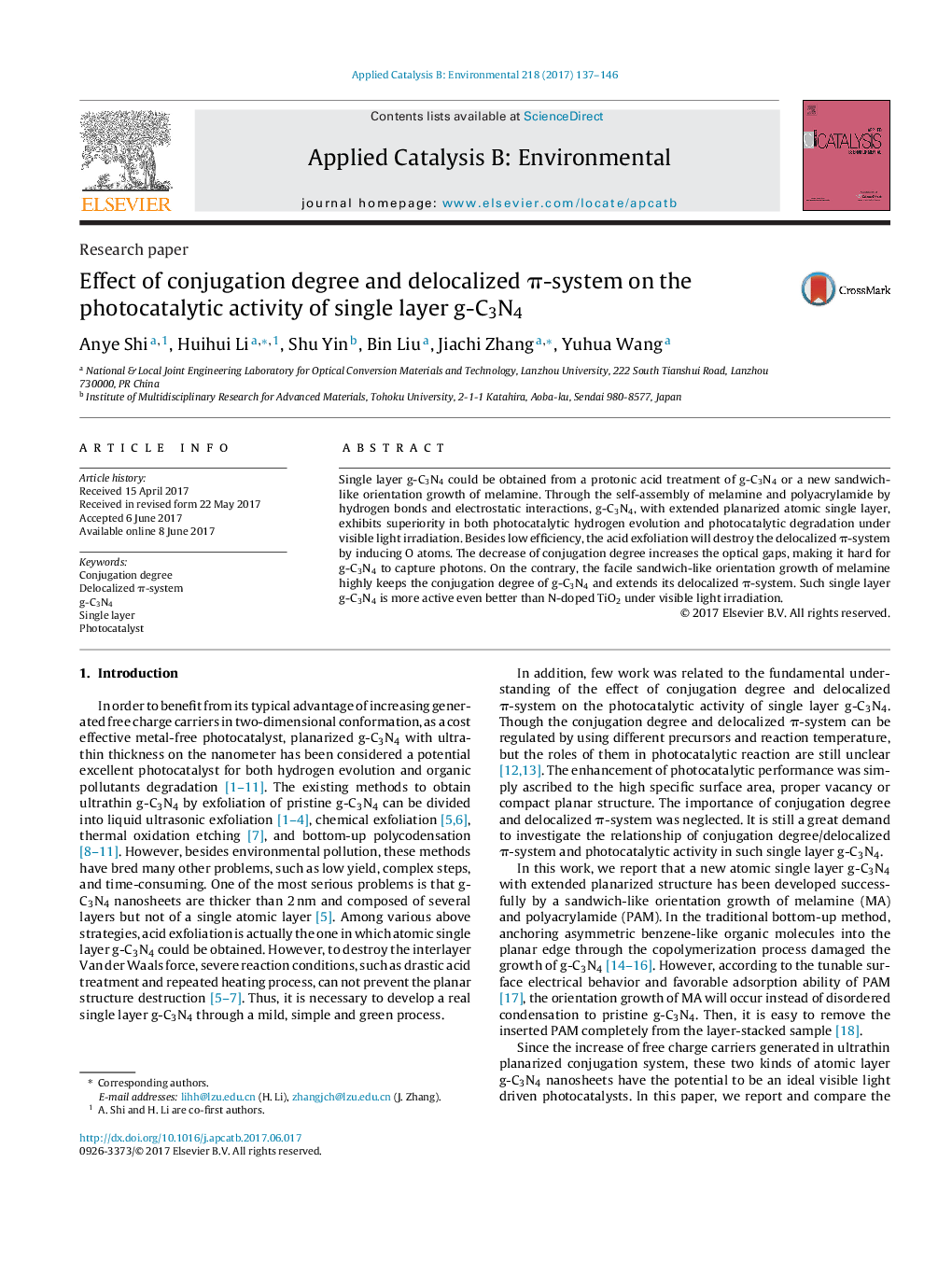| Article ID | Journal | Published Year | Pages | File Type |
|---|---|---|---|---|
| 6453706 | Applied Catalysis B: Environmental | 2017 | 10 Pages |
â¢Chemical exfoliation changes the surface electricity of g-C3N4.â¢The partial destruction occurred during acid exfoliation.â¢High conjugation degree was kept in g-C3N4-PAM.â¢Delocalized Ï-system was extended in g-C3N4-PAM.â¢g-C3N4-PAM exhibits higher photocatalytic activity.
Single layer g-C3N4 could be obtained from a protonic acid treatment of g-C3N4 or a new sandwich-like orientation growth of melamine. Through the self-assembly of melamine and polyacrylamide by hydrogen bonds and electrostatic interactions, g-C3N4, with extended planarized atomic single layer, exhibits superiority in both photocatalytic hydrogen evolution and photocatalytic degradation under visible light irradiation. Besides low efficiency, the acid exfoliation will destroy the delocalized Ï-system by inducing O atoms. The decrease of conjugation degree increases the optical gaps, making it hard for g-C3N4 to capture photons. On the contrary, the facile sandwich-like orientation growth of melamine highly keeps the conjugation degree of g-C3N4 and extends its delocalized Ï-system. Such single layer g-C3N4 is more active even better than N-doped TiO2 under visible light irradiation.
Graphical abstractDownload high-res image (201KB)Download full-size imageBecause of the superiority on conjugation degree and delocalized Ï-system, single layer g-C3N4-PAM exhibits excellent photocatalytic activity not only on organic degradation but also on H2 evolution.
